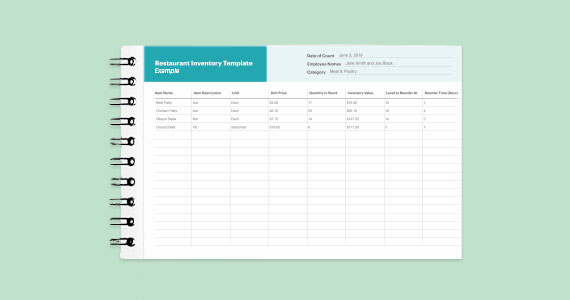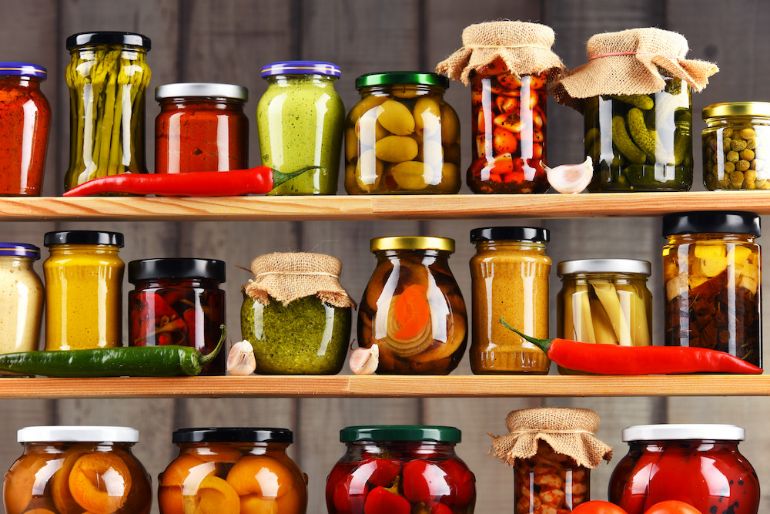We’re going to guess you opened your restaurant to cook great food for great people.
You probably didn’t open your restaurant because you wanted to spend time behind a computer fiddling with spreadsheets.
Inventory management isn’t the most glamorous part of owning a restaurant, but it is a vital part of running a sustainable and profitable business. Restaurants fail primarily because of mismanaged costs, and managing your revenue starts with managing your inventory.
And let’s face it – with the rise in minimum wage that doesn’t seem to be slowing down anytime soon, your cost management strategies need to be pristine.
But we get it, inventory management is tedious and boring. While we probably can’t make inventory management fun, we can recommend the right tools and systems to take away some of the pain.
By the end of this article, you’ll know how to use your staff, spreadsheets, and technology to take restaurant inventory in the fastest and most efficient way. So the next time you need to take inventory (which should be very, very soon), maybe it won’t seem so bad.

Simplify your inventory counts with our free restaurant inventory template.
Why You Should Care about Inventory Management
It’s impossible to keep track of the flow of your goods without effective inventory management.
Improper inventory management can lead to:
- Food waste
- Customer dissatisfaction
- Budget mismanagement
- Theft
The U.S. Environmental Protection agency found that between 4% and 10% of food purchased by food service operations is trashed before reaching the plate.
Bad inventory management also leads to bad customer service – because nothing is worse than an unfulfilled food craving due to an 86’d item. And if that one disappointment becomes a second disappointment, then a third … that customer will stop going to your restaurant, and maybe tell their friends not to stop by either.
According to one report, businesses lose $62 billion dollars per year to bad customer service.
When it come to internal theft, the stats are grim: 75% to 85% of all restaurant theft is committed by employees, accounting for up to $6 million in loss for U.S. restaurants and 4% of restaurant sales.
Shrinkage (liquor lost due to spill or waste) can also account for a significant part of your bottom line: 23% on liquor and draft beer, about 10% on wine, and 2% on bottled beer.
So it’s time to start caring about precise inventory management, because your restaurant’s survival literally depends on it.

How to Take Restaurant Inventory in Five Steps
Now, the question is: how to do inventory in a restaurant?
Follow these five steps for accurate inventory management.
1) Clean and organize your stock shelves.
If your stockroom is a disaster, you’re setting yourself up for failure. A messy stockroom leads to:
- Staff frustration
- Double counting
- Over-ordering items missed during the count – so, unnecessary costs
Tidy up your stockroom and organize your items before you take inventory. Here are some space organizing strategies to keep in mind:
- If your stockroom is overcrowded, order more shelving to avoid piling goods on the floor.
- Group items by food category, so dairy with dairy and meat with meat.
- Add labels to your shelves so that your inventory takers don’t get confused, especially if your dishes include similar ingredients. (Heads up: labels make it easier to sort shipments when they arrive or find ingredients during a busy service.)
- If you affix labels to a shelf, include arrows that indicate whether the item is on the shelf above or the shelf below.
- Create a unique inventory ID for each item. Use this ID to label your items in a spreadsheet or a piece of software, so that it’s easier to search for items or migrate your inventory data.
While this may sound like overkill, we assure you, it’s not. These strategies will make your life a lot easier when it’s time to count your inventory.
2) Create a schedule and assemble a team.
Decide how often you want to take inventory. For some items, like alcohol, you’ll probably want to do inventory every night. For other items, once a week is likely enough.
You should do inventory before you place new orders, so that you don’t end up spending money on items you already have.
Once you’ve created a schedule, assemble your team. Choose two people who will always be in charge of counting inventory. They should be the same people in charge of receiving orders, so that they’re already familiar with your stocking procedures.
Take the time to communicate to your team that good inventory management means better cash flow and a stronger financial position for the restaurant – which amounts to better job security for them.
Once you’ve assembled your inventory team, schedule your inventory for the same day at the same time. Consistency leads to healthy habits – and clean data you can depend on when you’re calculating your cost of goods sold (CoGS) and managing your budget.
3) Create an inventory sheet template.

Simplify your inventory counts with our free restaurant inventory template.
You’ll want to use a combination of software and spreadsheets to manage your inventory, but here’s how you can start with a spreadsheet.
You should think of your master inventory spreadsheet as what your staff will use when they take physical inventory. You’ll then input information from your spreadsheet into your POS or dedicated inventory software, so you can manage your inventory levels and analyze inventory costs.
Here’s how to set up your master inventory spreadsheet template, by field:
- Inventory ID
- Time period (ex. weekly: November 19–26)
- Food category (ex. meat & poultry, dairy, produce)
- Item name, to live within its respective food category
- Unit of measure (ex. lb., oz.)
- Unit cost: the cost for one unit of measure of the ingredient
- Quantity in stock: the current number of units for each ingredient in your restaurant
- Inventory value: the number you get when you multiply your unit cost by your quantity in stock
- Total inventory value: all inventory value line items, added together
Inventory ID
Your inventory ID will prevent reporting weaknesses caused by inconsistent/similar naming conventions. You may buy different types of beef, for instance, and using an inventory ID for each type will prevent confusion and keep your data clean.
Item name
Remember to be specific here, especially if you order variations of the same product. While you can rely on your inventory ID for specificity, you’ll still want to be clear with your item name for the sake of your staff who are taking inventory.
Unit of measure
Naturally, you won’t measure bread the same way you measure mayonnaise; each product will coincide with its own unit of measure. So if you order ground beef by the pound, include “lb” under your unit of measure.
Always stick with the unit of measure in which you order a product. For example, you’re not ordering napkins by the number of napkins, but rather by boxes of napkins.
Unit cost
Once you’ve established your unit of measure, input the cost for each unit. Make sure to be aware of any fluctuations in cost from your suppliers, as you’ll want to update your cost per unit in your master inventory spreadsheet as costs change.
Quantity in stock
Your quantity in stock is your inventory count. If you ordered 20 boxes of napkins for five dollars per box but on inventory day you have 18 boxes, 18 is the number that should be reflected here.
Inventory value
Here’s where it all comes together: to find your inventory value per item, multiply your cost per unit by your quantity in stock. For example, you know you have 18 boxes of napkins and that each box costs five dollars. Multiply 18 by 5 for a total inventory value of $90.
Your master inventory spreadsheet is what your staff will fill out when they’re taking inventory. After they’ve counted your inventory, however, you’ll want to use those numbers to inform and validate your menu item inventory and food costs. That’s when you can start to use technology to generate low inventory reports and ingredient consumption reports.

Simplify your inventory counts with our free restaurant inventory template.
4) Create your restaurant inventory consumption spreadsheet.
Your inventory consumption spreadsheet will tell you how much food you’re wasting, how much of an item you use per day, and how much you’re ultimately spending on inventory.
When you track inventory consumption on a day-to-day basis, you’re tracking the flow of goods that exit your restaurant, whether because they were bought or because they were wasted. Tracking inventory this way will allow you to be precise with your reorder amounts and save on costs.
Here’s what you’ll be tracking in your inventory consumption spreadsheet:
- Inventory ID
- Ingredient
- Unit of measure
- Cost per ingredient unit
- Amount used
- Total cost
- Starting stock
- Ending stock
- Daily consumption rate
- Waste quantity
- Waste cost
- Total adjustment quantity
Once you start tracking your daily consumption rate, you’ll be able to determine the reorder level for each item with the utmost precision.
Your reorder level tells you when you need to order more of a particular item. Also known as your “reorder point”, your reorder level isn’t a number you pull out of thin air – instead, you can use a formula:
Lead time demand + safety stock = Reorder level
To break it down further, you can find your lead time demand with this formula:
Lead time x average daily sale amount = Lead time demand
Your lead time is how long it takes to receive a shipment after making an order. For your average daily sales, check your inventory consumption spreadsheet: it’s your daily consumption rate multiplied by your cost per ingredient unit (under “total cost”).
Or just use your POS to determine your average daily sales. We promise, this is easier.
Once you calculate your lead time and understand your daily usage, use this formula to calculate your safety stock.
(Max daily usage x Max lead time in days) – (Average daily usage x Average lead time in days)
And that’s how you calculate your reorder point.
Once you hit your reorder point, your reorder quantity is the amount of product you purchase to feel comfortable with your inventory position. Plug this number into your master inventory spreadsheet so your inventory staff know how much to order once an item hits its reorder level.
5) Use POS-integrated solutions to automate inventory processes.
For some restaurateurs, all of this information is empowering.
For others, it’s an overwhelming nightmare.
The good news is that inventory management technology through your POS-integrated inventory solutions should be able to handle some of these nitty-gritty details for you.
Does this mean you have to ditch your spreadsheet?
Not at all. Because your spreadsheets can work pretty nicely to inform your data, which will smooth out inventory management in a way that doesn’t disrupt all your processes.
Think of your spreadsheets as data you can enter into your POS-integrated inventory solutions to manipulate in all sorts of ways that can help your business.
Data is the future of business. Successful restaurateurs know how to use data to make their businesses better and more efficient. So consider investing in a POS and integrated inventory solution that handles inventory tracking so you don’t have to rely so much on spreadsheets in the first place.

Inventory tracking is easily one of the most important aspects of owning a restaurant. So many restaurants fail because they don’t keep accurate counts of their inventory, especially for high-volume sellers like alcohol.
If you’re diligent about nothing else, be diligent about your inventory. We give you full permission to be as nitpicky and neurotic as you can be about your inventory – because it could mean the difference between staying afloat or going out of business.

Simplify your inventory counts with our free restaurant inventory template.
Download our free inventory template
Sign up for our free weekly TouchBistro Newsletter







